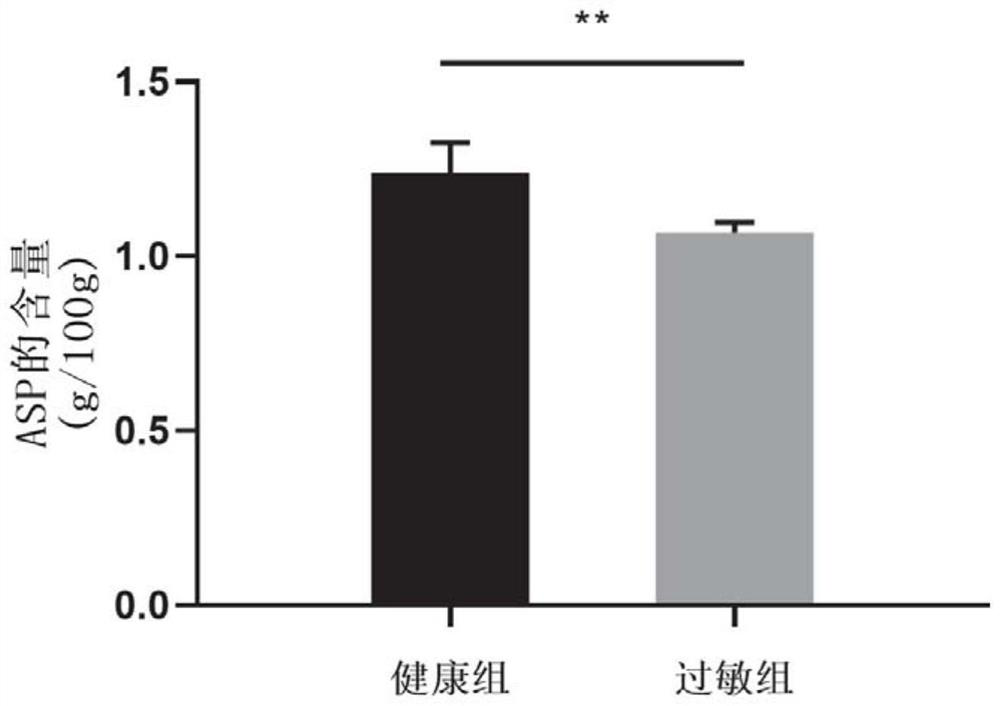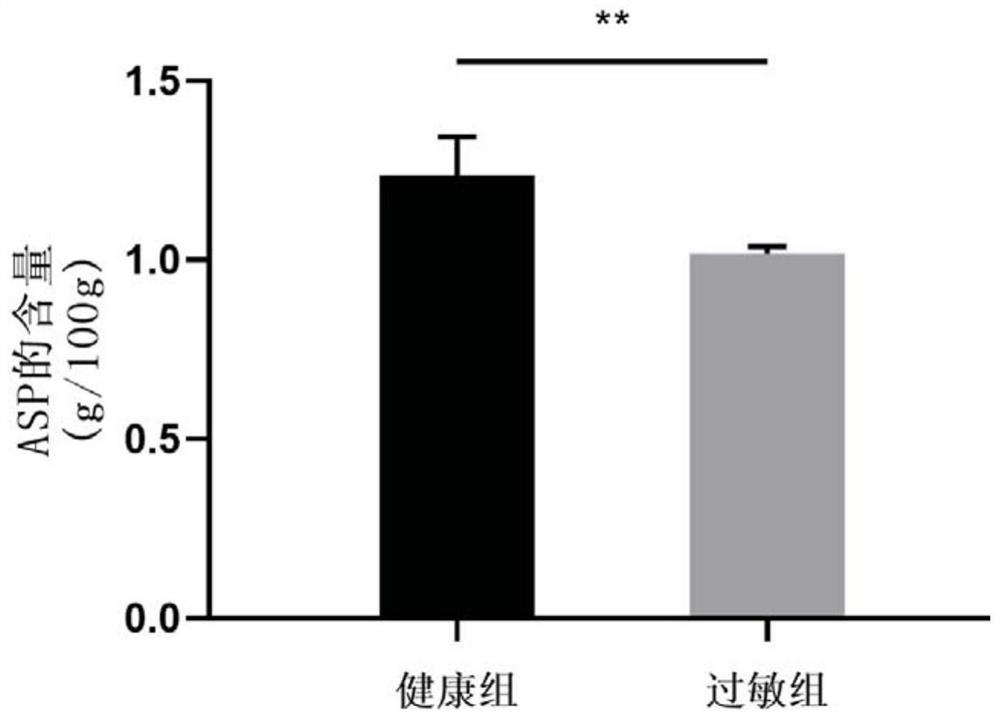Kit for evaluating allergy degree of individual
A kit and individual technology, applied in the field of kits for evaluating the degree of individual allergy, can solve the problem of lack of efficient and unified standards for the diagnosis of allergies, and achieve the effect of improving efficiency and accuracy and wide application.
- Summary
- Abstract
- Description
- Claims
- Application Information
AI Technical Summary
Problems solved by technology
Method used
Image
Examples
Embodiment 1
[0023] Aspartic acid (ASP) is used to assess human seafood allergy in the following steps:
[0024] (1) Acquisition of samples:
[0025] Three volunteers with a history of mollusc seafood allergy and 11 healthy volunteers were recruited. The healthy group and the allergic group were matched in gender and age and were comparable (P>0.05).
[0026] (2) Pretreatment of samples:
[0027] Dry the feces sample in an oven at 60°C and crush it. Accurately weigh 50 mg of the dried solid sample and put it into a hydrolysis tube. Try to avoid the sample powder hanging on the wall. Slowly add 4ml of hydrochloric acid with a concentration of 6mol / L and blow it with nitrogen. Seal the hydrolysis tube immediately after blowing nitrogen for 15 minutes; place the sealed sample in an oven at 110°C for 22-24 hours and take it out to cool; open the hydrolysis tube and dilute the sample to 50ml with pure water; 1ml of the solution sample was deacidified on a nitrogen blower at 60°C until dry; a...
Embodiment 2
[0036] The detection steps of aspartic acid (ASP) for evaluating the sensitization of mouse TM (shrimp tropomyosin) are as follows:
[0037] (1) Acquisition of samples:
[0038] Nine female Balb / c mice aged 6-8 weeks were fed, and three of them were sensitized with TM. The mice were stimulated to defecate after stress, and the feces of the two groups of mice were collected.
[0039] (2) Pretreatment of samples:
[0040]Dry the feces sample in an oven at 60°C and crush it. Accurately weigh 50 mg of the dried solid sample and put it into a hydrolysis tube. Try to avoid the sample powder hanging on the wall. Slowly add 4ml of 6mol / L hydrochloric acid and hydrolyze with a nitrogen blower. Seal the tube immediately after blowing the tube with nitrogen for 15 minutes; place the sealed sample in an oven at 110°C for 22-24 hours and take it out to cool; open the hydrolysis tube and dilute the sample to 50ml with pure water; accurately absorb the solution after the volume 1ml of the ...
PUM
 Login to View More
Login to View More Abstract
Description
Claims
Application Information
 Login to View More
Login to View More - R&D
- Intellectual Property
- Life Sciences
- Materials
- Tech Scout
- Unparalleled Data Quality
- Higher Quality Content
- 60% Fewer Hallucinations
Browse by: Latest US Patents, China's latest patents, Technical Efficacy Thesaurus, Application Domain, Technology Topic, Popular Technical Reports.
© 2025 PatSnap. All rights reserved.Legal|Privacy policy|Modern Slavery Act Transparency Statement|Sitemap|About US| Contact US: help@patsnap.com


